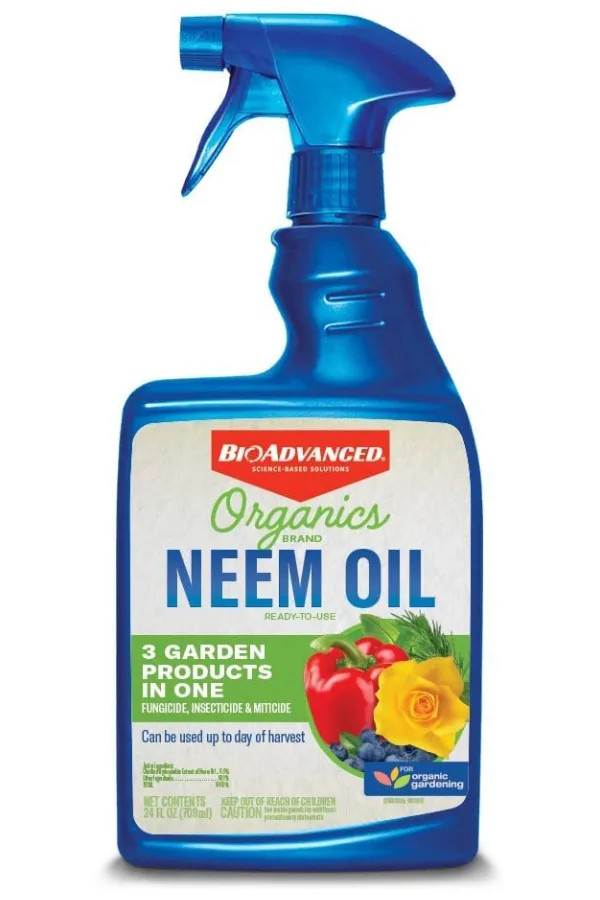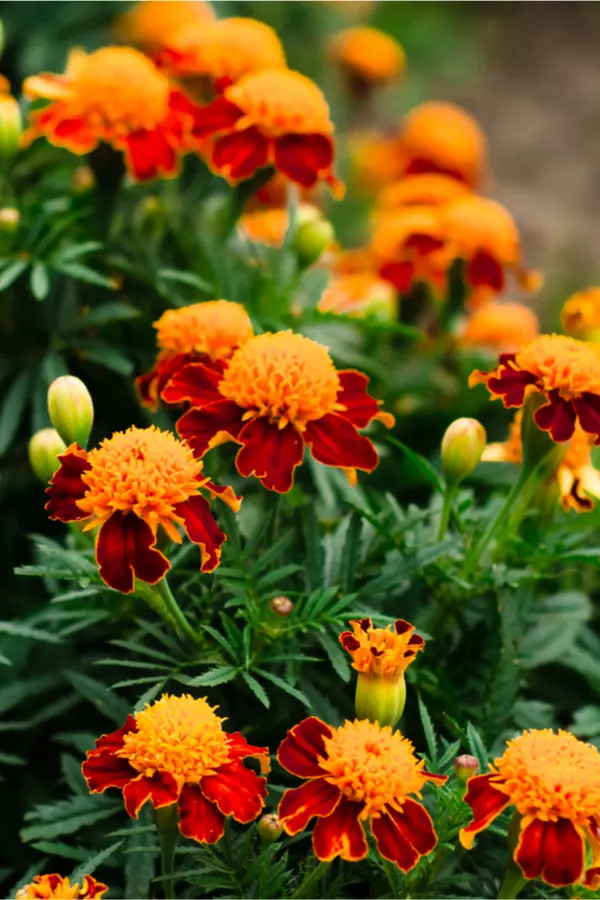Whiteflies on tomato plants can wreak havoc on your harvest, but don’t worry. This comprehensive guide from flyermedia.net provides all-natural, effective strategies to eliminate and prevent whitefly infestations, ensuring a healthy and abundant tomato yield. Learn about organic solutions, beneficial insects, and preventative measures to protect your precious plants. Discover pest control methods, gardening tips, and organic gardening to produce the best tomatoes ever.
1. What Are Whiteflies and Why Are They Harmful to Tomato Plants?
Whiteflies are small, sap-sucking insects that can severely damage tomato plants. They feed on plant sap, weakening the plant, causing yellowing and curling of leaves, and reducing overall vigor. According to research from the University of California Agriculture and Natural Resources, whiteflies can transmit viruses that further harm tomato plants, leading to significant yield losses.
1.1. What Damage Do Whiteflies Cause?
Whiteflies inflict damage on tomato plants through several mechanisms:
- Sap-Sucking: They extract sap from the leaves, depriving the plant of vital nutrients.
- Honeydew Excretion: Whiteflies excrete a sticky substance called honeydew, which promotes the growth of sooty mold, hindering photosynthesis.
- Virus Transmission: Whiteflies can transmit plant viruses, leading to diseases that can stunt growth and reduce fruit production.
1.2. How Do Whiteflies Impact Tomato Production?
The impact of whiteflies on tomato production can be significant. As the insects feed, they weaken the plants, leading to:
- Reduced Yield: Weakened plants produce fewer tomatoes.
- Poor Fruit Quality: Tomatoes may ripen unevenly or develop blemishes.
- Increased Susceptibility to Disease: Stressed plants are more vulnerable to diseases.
2. Identifying Whiteflies on Tomato Plants
Early detection is crucial in managing whiteflies effectively. Knowing how to identify these pests can prevent significant damage to your tomato plants.
2.1. What Are the Signs of a Whitefly Infestation?
Common signs of a whitefly infestation include:
- Visible Insects: Small, white, fly-like insects on the undersides of leaves.
- Yellowing Leaves: Leaves turning yellow, especially along the veins.
- Curling Leaves: Leaves curling downwards or inwards.
- Sticky Residue: A sticky, shiny substance (honeydew) on the leaves.
- Sooty Mold: Black, sooty mold growing on the honeydew.
2.2. Where Do Whiteflies Hide?
Whiteflies typically hide on the undersides of leaves, making them difficult to spot. Regularly inspect the undersides of leaves, especially the lower ones, for signs of infestation.
2.3. How Quickly Do Whiteflies Reproduce?
Whiteflies can reproduce rapidly, with several generations occurring in a single growing season. According to the University of Florida IFAS Extension, a single female whitefly can lay hundreds of eggs, leading to exponential population growth if left unchecked.
3. Natural Methods to Eliminate Whiteflies
Fortunately, several natural methods can effectively eliminate whiteflies without resorting to harmful chemicals. These methods are safe for your plants, the environment, and your health.
3.1. How Effective Is Soap and Water Spray for Whitefly Control?
A soap and water spray is a simple and effective method for controlling whiteflies. Mix four tablespoons of liquid dish soap (organic) with one gallon of water. Spray the mixture thoroughly on the leaves, especially the undersides, where whiteflies congregate. The soap disrupts the whiteflies’ outer coating, causing them to dehydrate and die. Repeat the treatment every few days until the infestation is under control.
 organic dish soap – stopping whiteflies
organic dish soap – stopping whiteflies
3.2. How Does Neem Oil Help in Getting Rid of Whiteflies?
Neem oil is a natural insecticide derived from the neem tree. It works by disrupting the whiteflies’ life cycle, preventing them from feeding, growing, and reproducing. Mix four teaspoons of neem oil with one gallon of water, and add a few drops of liquid dish soap to help the solution adhere to the leaves. Spray the mixture thoroughly on the tomato plants, ensuring you cover all surfaces, including the undersides of leaves.
 how to keep whiteflies off tomato plants
how to keep whiteflies off tomato plants
3.3. Can Sticky Traps Be Used for Whitefly Control?
Sticky traps, particularly yellow ones, can effectively trap whiteflies. Whiteflies are attracted to the yellow color and get stuck on the adhesive surface. Place sticky traps near your tomato plants to capture adult whiteflies. This can help reduce the population and prevent further spread.
4. Repelling Whiteflies Naturally
In addition to eliminating whiteflies, several natural methods can repel them from your tomato plants, preventing infestations from occurring in the first place.
4.1. How Do Beneficial Insects Help in Repelling Whiteflies?
Beneficial insects, such as ladybugs, lacewings, and parasitic wasps, are natural predators of whiteflies. Attracting these beneficial insects to your garden can help keep whitefly populations in check. Plant flowers and herbs that attract these insects, such as marigolds, zinnias, and dill.
 attracting insects with marigolds
attracting insects with marigolds
4.2. Which Plants Repel Whiteflies?
Certain plants have natural repellent properties that can deter whiteflies from your tomato plants. These include:
- Marigolds: Marigolds emit a scent that repels whiteflies and other pests.
- Basil: Basil is known to repel whiteflies, aphids, and other insects.
- Thyme: Thyme has a strong scent that deters whiteflies.
- Chives: Chives repel whiteflies and other garden pests.
Plant these companion plants near your tomato plants to create a natural barrier against whiteflies.
4.3. How Effective Are Worm Castings in Keeping Whiteflies Away?
Worm castings are not only a great fertilizer but also help repel whiteflies. Worm castings increase the enzyme levels of chitinase in plants. Higher levels of this enzyme make plants less attractive to whiteflies. Add worm castings to the soil around your tomato plants to boost their natural defenses.
5. Preventing Whitefly Infestations
Prevention is key to managing whiteflies effectively. By taking proactive measures, you can reduce the likelihood of infestations and keep your tomato plants healthy.
5.1. How Important Is Regular Monitoring of Tomato Plants?
Regular monitoring is essential for detecting whiteflies early. Inspect your tomato plants regularly, paying close attention to the undersides of leaves. Early detection allows you to take action before the infestation becomes severe.
5.2. What Are the Best Practices for Maintaining Healthy Plants?
Healthy plants are more resistant to pests and diseases. Ensure your tomato plants are properly watered, fertilized, and receive adequate sunlight. Healthy plants can better withstand whitefly attacks and recover more quickly.
5.3. How Does Good Garden Hygiene Prevent Whiteflies?
Good garden hygiene can help prevent whitefly infestations. Remove weeds and debris from around your tomato plants, as these can harbor whiteflies and other pests. Also, avoid overcrowding plants, as this can create a favorable environment for whiteflies.
6. Advanced Strategies for Severe Infestations
In cases of severe infestations, more aggressive strategies may be necessary to eliminate whiteflies and protect your tomato plants.
6.1. When Should Insecticidal Soap Be Used?
Insecticidal soap is a stronger version of the soap and water spray and can be used for severe infestations. Follow the instructions on the product label and apply thoroughly to all plant surfaces.
6.2. How Can Horticultural Oils Help?
Horticultural oils, such as mineral oil or canola oil, can smother whiteflies and their eggs. Apply the oil thoroughly to all plant surfaces, following the instructions on the product label. Be careful not to apply horticultural oils on hot, sunny days, as this can damage the plants.
6.3. Are There Biological Control Options?
Biological control involves introducing natural enemies of whiteflies into your garden. This can include releasing beneficial insects, such as Encarsia formosa, a parasitic wasp that targets whiteflies. Consult with a local agricultural extension office for recommendations on biological control options in your area.
7. Understanding Whitefly Biology
Understanding the biology of whiteflies can help you develop more effective control strategies.
7.1. What Is the Whitefly Life Cycle?
The whitefly life cycle consists of four stages: egg, nymph, pupa, and adult. The eggs are laid on the undersides of leaves and hatch into nymphs, which feed on plant sap. The nymphs then develop into pupae, which eventually emerge as adult whiteflies.
7.2. How Does Temperature Affect Whitefly Development?
Temperature plays a significant role in whitefly development. Whiteflies thrive in warm temperatures, with optimal growth occurring between 75°F and 90°F (24°C and 32°C). In cooler temperatures, their development slows down, and they may become less active.
7.3. What Are the Common Species of Whiteflies?
Common species of whiteflies that affect tomato plants include the sweet potato whitefly (Bemisia tabaci) and the greenhouse whitefly (Trialeurodes vaporariorum). These species have slightly different characteristics and may respond differently to control measures.
8. Choosing the Right Products for Whitefly Control
Selecting the right products is crucial for effective whitefly control. Consider the following factors when choosing products:
8.1. What Are the Pros and Cons of Chemical Insecticides?
Chemical insecticides can be effective in controlling whiteflies but may also have negative impacts on the environment and human health. They can harm beneficial insects, contaminate soil and water, and pose risks to gardeners and consumers.
8.2. Why Choose Organic and Natural Products?
Organic and natural products are safer for the environment, beneficial insects, and human health. They are derived from natural sources and do not contain synthetic chemicals.
8.3. How to Evaluate Product Safety and Effectiveness?
When choosing products, read the labels carefully and look for certifications from reputable organizations, such as the Organic Materials Review Institute (OMRI). Also, consider the product’s effectiveness based on reviews and research.
9. Whitefly Control in Greenhouses
Controlling whiteflies in greenhouses presents unique challenges due to the enclosed environment.
9.1. What Are the Challenges of Greenhouse Whitefly Control?
Greenhouses provide a favorable environment for whiteflies, with warm temperatures and limited natural predators. This can lead to rapid population growth and make control more difficult.
9.2. How to Implement Integrated Pest Management (IPM) in Greenhouses?
Integrated Pest Management (IPM) is a holistic approach to pest control that combines multiple strategies, including monitoring, cultural practices, biological control, and targeted use of pesticides. Implement IPM in your greenhouse to manage whiteflies effectively and sustainably.
9.3. Are There Specific Greenhouse Whitefly Control Products?
Specific products are designed for greenhouse whitefly control, such as sticky traps, biological control agents, and certain horticultural oils. Consult with a local agricultural extension office for recommendations on products suitable for greenhouse use.
10. Addressing Specific Concerns and Scenarios
10.1. What If Whiteflies Persist Despite Efforts?
If whiteflies persist despite your efforts, reassess your control strategies and consider trying different methods. It may be necessary to combine multiple approaches or seek advice from a professional pest control advisor.
10.2. How to Deal With Whiteflies on Seedlings?
Whiteflies can be particularly damaging to seedlings, as young plants are more vulnerable. Protect seedlings by covering them with row covers or using a gentle soap and water spray.
10.3. Can Whiteflies Affect Other Garden Plants?
Whiteflies can affect a wide range of garden plants, including vegetables, fruits, and ornamentals. Monitor all your plants for signs of infestation and take appropriate action.
FAQ About Getting Rid of Whiteflies on Tomato Plants
1. What are the first signs of a whitefly infestation on tomato plants?
The first signs include small, white, fly-like insects on the undersides of leaves and yellowing or curling leaves.
2. Is soapy water safe to spray on tomato plants?
Yes, a mild solution of soapy water is safe for tomato plants. Use four tablespoons of liquid dish soap per gallon of water.
3. How often should I spray neem oil on my tomato plants for whitefly control?
Spray neem oil every 7-14 days, or as needed, to control whiteflies.
4. Can beneficial insects completely eliminate a whitefly infestation?
Beneficial insects can significantly reduce whitefly populations but may not completely eliminate them in severe infestations.
5. Are yellow sticky traps effective for catching whiteflies?
Yes, yellow sticky traps are very effective for attracting and trapping whiteflies.
6. What other plants are attractive to whiteflies besides tomatoes?
Other plants attractive to whiteflies include peppers, eggplants, and various ornamental plants.
7. How can I improve my garden hygiene to prevent whiteflies?
Remove weeds, debris, and fallen leaves regularly, and ensure good air circulation around plants.
8. Is it necessary to remove heavily infested leaves from tomato plants?
Yes, removing heavily infested leaves can help reduce the whitefly population and prevent further spread.
9. Can whiteflies transmit diseases to tomato plants?
Yes, whiteflies can transmit viruses that can cause diseases in tomato plants.
10. Where can I get more information about whitefly control in my area?
Consult your local agricultural extension office for specific recommendations and resources.
Protect your tomato plants from whiteflies by implementing these natural and effective strategies. For more gardening tips, news, and resources, visit flyermedia.net, your go-to source for all things gardening and aviation. Discover training programs, career opportunities, and the latest industry updates. Fly high with us at flyermedia.net! Visit us at 600 S Clyde Morris Blvd, Daytona Beach, FL 32114, United States, or call +1 (386) 226-6000.
